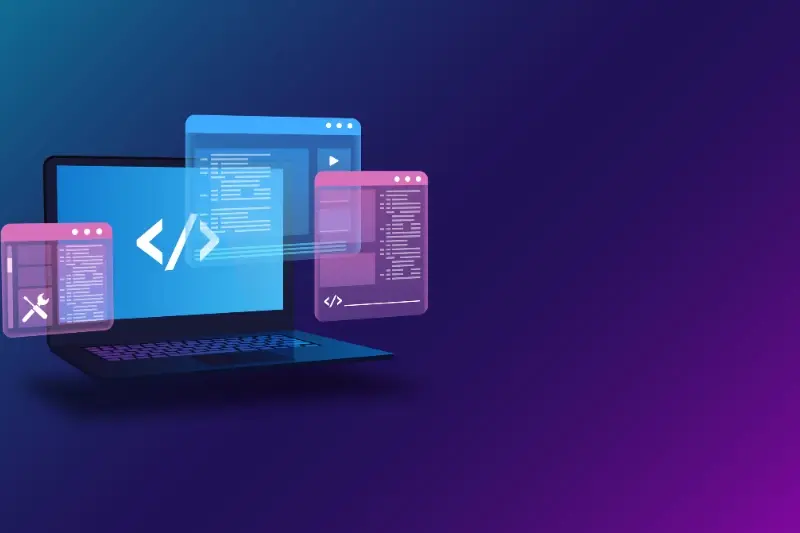The Hidden Costs of No-Code Development Nobody Talks About
No-Code platforms promise to make mobile app development cheap, fast, and accessible to everyone. The marketing tells us we can build professional apps without writing a single line of code—sounds brilliant, right? But here's what the glossy tutorials don't mention: the budget reality of no-code development includes a maze of hidden expenses that can quickly spiral out of control.
After working with countless clients who've ventured down the no-code path, I've watched the same story unfold time and again. What starts as a £20 monthly subscription somehow transforms into thousands of pounds in unexpected costs. The problem isn't that no-code platforms are inherently bad—they're not. The issue is that nobody talks about the real financial picture.
The true cost of no-code development isn't found in the subscription price—it's hidden in the compromises, workarounds, and limitations you discover along the way
These hidden expenses aren't just minor inconveniences that add a few pounds here and there. They're significant budget busters that can make your "affordable" no-code mobile app cost more than traditional development. From platform limitations that require expensive workarounds to integration nightmares that demand third-party solutions, the real costs lurk beneath the surface, waiting to surprise unsuspecting app builders.
The Upfront Costs That Sneak Up On You
When people think about no-code development, they picture quick wins and cheap solutions. I get it—the marketing makes it sound like you can build the next Instagram for the price of a coffee subscription. But here's what nobody mentions in those glossy promotional videos: the upfront costs start adding up before you've even published your first app.
Most no-code platforms operate on tiered pricing models that seem reasonable at first glance. You start with the basic plan, thinking you'll upgrade later if needed. Then reality hits. You need custom branding, so that's an extra fee. You want to remove the platform's watermark? Another upgrade. Need more storage or bandwidth? Time to open your wallet again.
Common Hidden Upfront Expenses
- Professional plan upgrades for basic features
- Custom domain and SSL certificates
- Premium templates and design elements
- Third-party integrations and API calls
- Additional storage and bandwidth
- Team collaboration features
- Advanced analytics and reporting tools
What really catches people off guard is how quickly these costs compound. You might budget £50 monthly for your app, but end up paying £200 just to get the features you actually need. And that's before you've even launched or acquired a single user.
When Your No-Code Platform Hits Its Limits
Here's something I see time and time again—clients who start with a no-code platform thinking they've found the perfect solution for their mobile app, only to discover they've painted themselves into a corner. The platform that seemed so flexible at first suddenly feels like a straitjacket when you want to add that one feature that makes your app special.
No-code platforms are brilliant for getting started, don't get me wrong. But they're designed around templates and pre-built components, which means you're building within someone else's vision of what an app should be. When you need custom functionality—and trust me, you will—that's when the no-code drawbacks start piling up.
Always prototype your core features in your chosen no-code platform before committing. If something feels clunky or impossible during prototyping, it'll be worse in the final product.
The Migration Nightmare
Moving from a no-code platform to custom development isn't like switching from one car to another. You're essentially starting from scratch because:
- Your data structure was built around the platform's limitations
- Custom code can't be exported or reused
- User authentication and payment systems need complete rebuilding
- Any integrations you've set up will need reconfiguring
The budget reality? Most of our clients who've gone down this route end up spending 60-80% more than if they'd built custom from the start. That's not including the time lost or the user disruption during migration.
The Price of Making Things Look Professional
Here's something no-code platforms don't tell you upfront—making your app look properly professional costs extra. A lot extra. Most no-code builders come with basic templates that frankly look like they were designed in 2010. They're functional, sure, but they scream "budget app" from the moment someone opens them.
If you want custom designs, premium templates, or advanced UI components, you'll need to pay for them. Some platforms charge per template pack, others have monthly design subscription fees. Then there's the fonts—premium typography isn't free. Icons? That's another subscription. Custom colour schemes and branding elements? More money.
Common Design Costs You'll Face
- Premium template packages (£20-£100 each)
- Custom component libraries (£15-£50 monthly)
- Professional icon sets (£10-£30 per pack)
- Advanced animation features (£25-£75 monthly)
- Custom font licensing (£20-£200 annually)
The real kicker? These design limitations often force you to hire a designer anyway. They'll need to work within the platform's constraints, which takes longer and costs more than traditional design work. I've seen clients spend thousands trying to make their no-code app look professional, only to rebuild it properly later.
What started as a cost-saving measure becomes an expensive exercise in making something look decent enough to launch.
Integration Nightmares and Third-Party Bills
Here's where things get really expensive with no-code platforms—connecting your mobile app to other services. Most no-code tools charge you for every integration you need, and trust me, you'll need more than you think.
Want to connect your app to Stripe for payments? That's an extra monthly fee. Need to sync with your email marketing platform? Another subscription. Planning to use Google Analytics or social media logins? More charges piling up. These integration costs can easily add up to hundreds of pounds per month, and that's before you've even launched your app.
The Real Kicker
The worst part is that many integrations come with usage limits. Send too many emails through your CRM connection and you'll hit a paywall. Process more payments than your tier allows and suddenly you're forced to upgrade your entire plan.
Every integration feels like a small monthly fee until you realise you're paying for twenty different connections just to make your app work properly
I've seen clients who started with a £30 monthly no-code subscription end up paying over £300 just for integrations. The platform itself becomes the smallest part of your budget reality, whilst third-party connections drain your wallet month after month.
Performance Problems That Cost Real Money
Here's something that catches most people off guard—no-code apps often run slower than traditional apps, and that sluggish performance directly impacts your bottom line. I've seen businesses lose thousands of pounds in revenue because their checkout process took too long to load or their search function was painfully slow.
No-code platforms generate more code than necessary to make your app work. Think of it like having a massive toolbox when you only need a screwdriver—everything works, but it's clunky and inefficient. This extra weight means your app uses more data, drains batteries faster, and responds more slowly to user interactions.
The Real Cost of Poor Performance
When your app performs poorly, users don't just get frustrated—they leave. And they don't come back. Research shows that even a one-second delay in loading time can reduce conversions by 7%. For an e-commerce app making £10,000 monthly, that's £700 lost every month.
- Higher bounce rates mean lower search rankings
- Slow apps get poor reviews in app stores
- Users uninstall apps that feel laggy or unresponsive
- Customer support costs increase as users report "bugs" that are actually performance issues
The kicker? Fixing performance issues in no-code platforms is often impossible without switching to custom development—which means starting over from scratch.
The Support Desert When Things Go Wrong
Picture this: it's 2AM, your mobile app has mysteriously stopped working, and you're frantically searching for help. With traditional development agencies, you'd have a dedicated team to call—but with no-code platforms, you're often on your own in what feels like a complete support wasteland.
Most no-code platforms offer basic documentation and community forums, but when you're facing a critical bug that's stopping users from making purchases, forum posts aren't going to cut it. Premium support plans exist, but they come with hefty price tags that weren't part of your original budget reality.
The Real Cost of Getting Help
Support costs can quickly spiral out of control when your app encounters problems. Many platforms charge anywhere from £200-£500 per month for priority support, and that's before you factor in the hidden expenses of downtime while waiting for responses.
- Community forums: Free but slow and unreliable
- Email support: Often takes 24-48 hours for responses
- Premium support: Expensive monthly fees for faster help
- Custom development help: Can cost thousands when platform limits are reached
The biggest issue? When something breaks, you can't fix it yourself. You're completely dependent on the platform's support team or expensive third-party developers who specialise in that specific no-code tool.
Always factor support costs into your budget from day one. Set aside at least 15-20% of your development budget for ongoing support and maintenance issues.
Conclusion
Look, I'm not here to scare you away from no-code development—it has its place and can be brilliant for certain projects. But after years of helping clients who've been caught off guard by these hidden costs, I felt it was time someone talked about the reality of what you're signing up for.
The truth is, no-code platforms work best when you understand their limitations from day one. If you're building a simple prototype or a basic business tool that doesn't need custom features, you might be absolutely fine. But if you're planning something that will grow, need specific integrations, or represent your brand professionally, those "hidden" costs we've discussed aren't really hidden at all—they're inevitable.
What frustrates me most is seeing businesses make decisions based on that initial low price point without considering the bigger picture. Yes, you can get started for £20 a month, but will you still be paying £20 a month in two years' time? Probably not. Will you be able to move your app somewhere else if you need to? Often, no.
Before you commit to any development approach, ask yourself the hard questions about where you want to be in 12 months. Your future self will thank you for thinking it through properly.
Share this
Subscribe To Our Blog
You May Also Like
These Related Stories

Why Vibe Coding Could Be the Future of Mobile App Development

Edge Computing For Mobile Apps: A Complete Beginner's Guide





